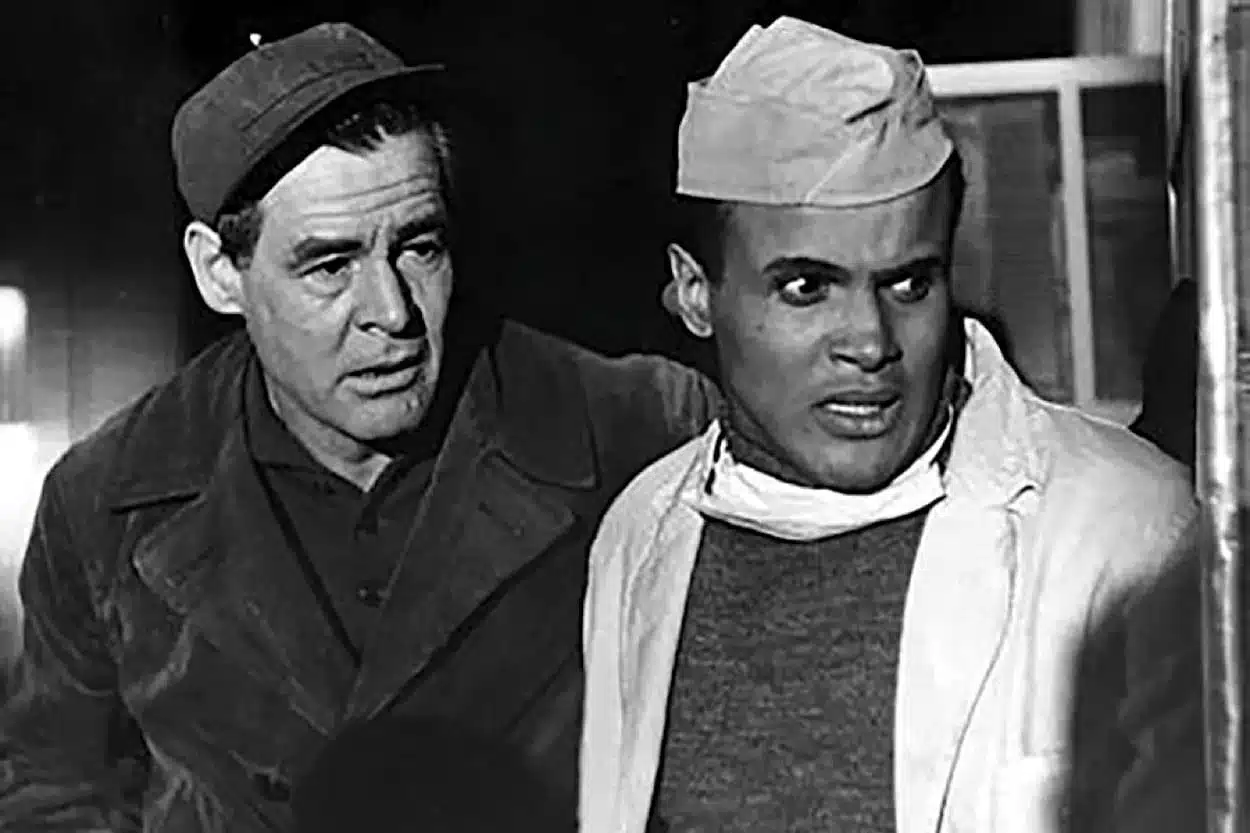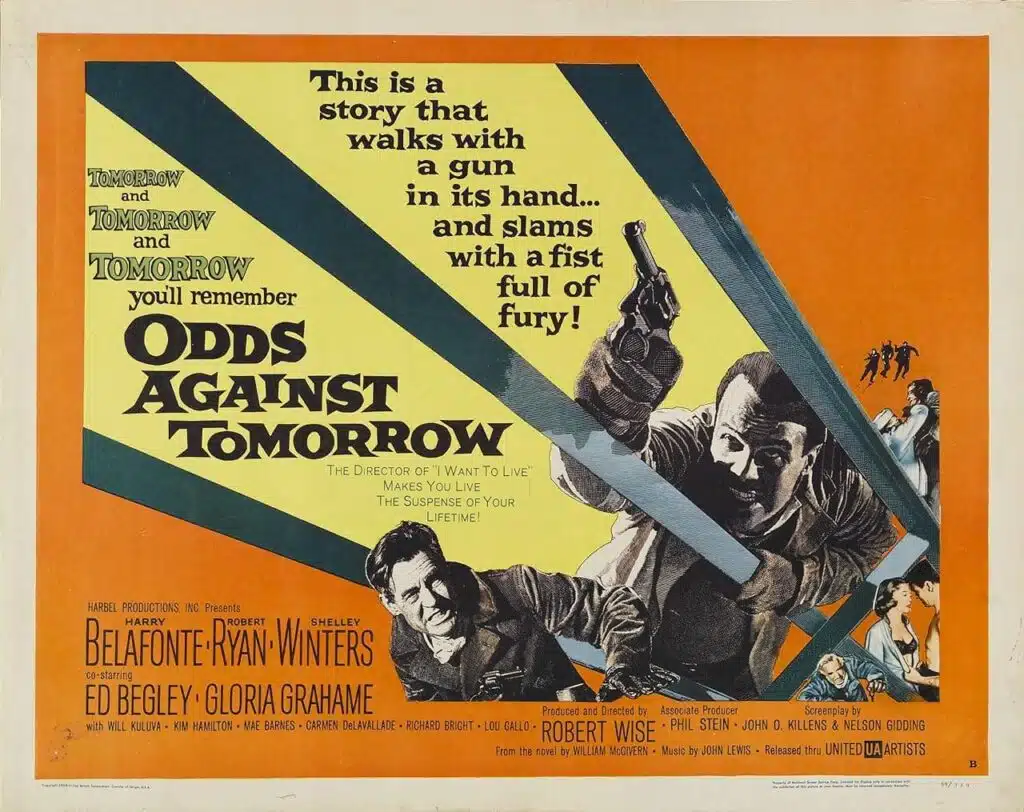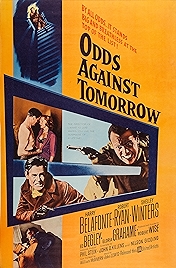There are a lot of ways of approaching 1959’s Odds Against Tomorrow. It’s that sort of film. But let’s be boring and approach it from the usual angle and say it’s the first film noir with a black lead actor in it.
It’s Harry Belafonte, whose HarBel company also produced it, and he plays one of three men involved in a bank job. Ed Begley plays the organising force, an ex cop called Burke hoping the job will plug the gap where his pension would have been if he hadn’t been been the fall guy in some police corruption scandal. Robert Ryan is Slater, the ex soldier whose anger issues are partly down to undiagnosed PTSD, partly just down to inadequacy and partly down to a wide streak of racism which makes him increasingly out of step in a changing world. Belafonte is Ingram, the guy seemingly doing OK for himself – fancy white sports car and all that – but in debt to a gangster who suddenly wants his money back.
The director is Robert Wise, a master of many forms. One year before this he was directing the superb submarine thriller Run Silent Run Deep. Two years afterwards he was directing West Side Story. Here he’s a master of noir, and there are lean, taut scenes, faces looming large in the frame and all the stylish moxie that the noirish thriller requires. Jean-Pierre Melville claims to have taken quite a lot from this movie for his run of brilliant 1960s gangster movies – Le Samouraï, Le Cercle Rouge, Un Flic – but Wise also appears to be borrowing from Melville’s earlier classic, Bob le Flambeur. This is a film that takes so long to get to its actual heist that you start to wonder if everyone has forgotten about it – exactly as in Bob le Flambeur.
This allows for a detailed survey of the emotional landscape, most particularly of Ryan’s Slater, a man slightly out of time, geographically out of space (he’s a Southern good old boy adrift in New York) and whose racism isn’t presented so much as a moral failing as a bug in human programming that’s a hell of a nuisance if you’re trying to organise things efficiently – like a bank job. Slater’s racism threatens at every turn to gum up the works.
Wise shoots on infra-red film here and there, which gives things a slightly spooky and ethereal aspect (look out for white grass and trees with white leaves – a sign that infra-red is being used), and the score by John Lewis of the Modern Jazz Quartet gives this a happening, snappy feel (as do the abstract expressionist opening credits). Lewis’s band, incidentally, includes Jim Hall, Bill Evans and Milt Jackson. Modern is the idea: smart, efficient, cool.
They are all Belafonte trademarks, of course, but though his fingerprints are all over this, his character stays back and doesn’t hog the show. This is primarily the story of Slater, the thoughtful, less impulsive Johnny coming in at second and cop Burke a good way behind.
Robert Ryan, a B movie star who will endure long after prettier faces have faded, was nothing like the cynical, violent, damaged characters he played and that informs his performance as Slater, a dangerous firecracker of a man, but with something in the background that helps us understand where it’s all coming from – he’s broken.
They’re all broken, these characters, in different ways. And doomed. As they head towards their simple stick-up finale it seems obvious that their plan is too simple to succeed.
It all finishes on top of some gas storage facility, where Slater and Ingram end up in a shoot-out after the job goes wrong. And where, in a final scene high on irony, the two men wind up dead in a massive explosion that renders them indistinguishable one from the other.
Odds Against Tomorrow – Watch it/buy it at Amazon
I am an Amazon affiliate
© Steve Morrissey 2023


